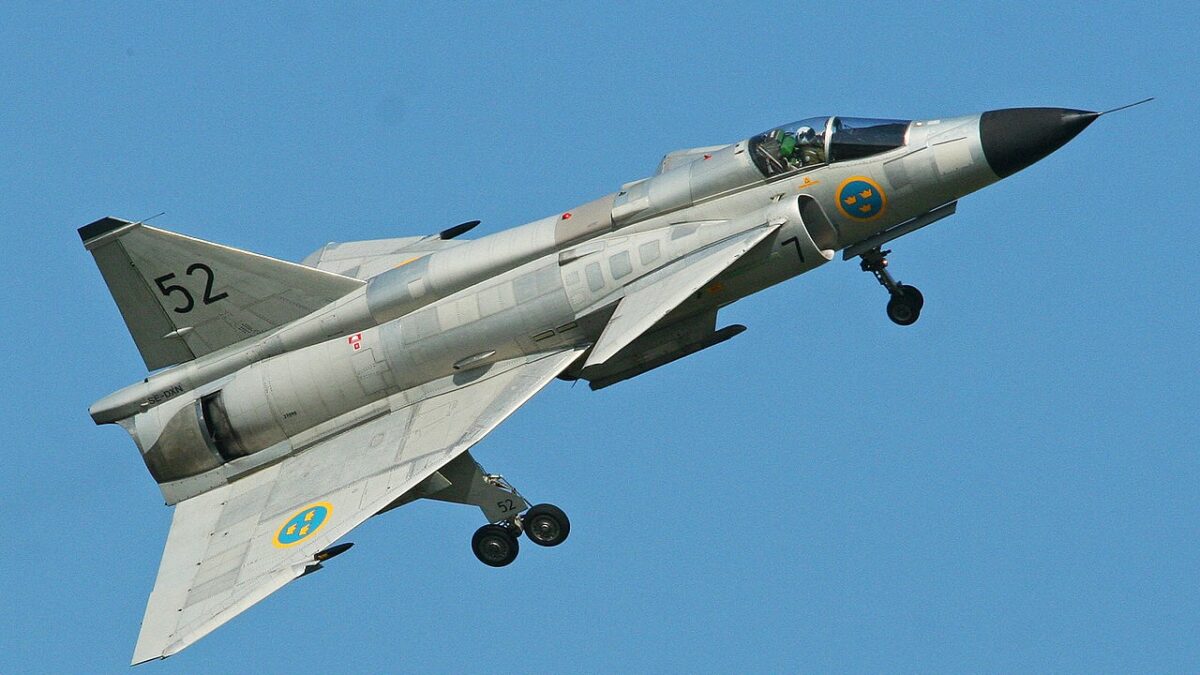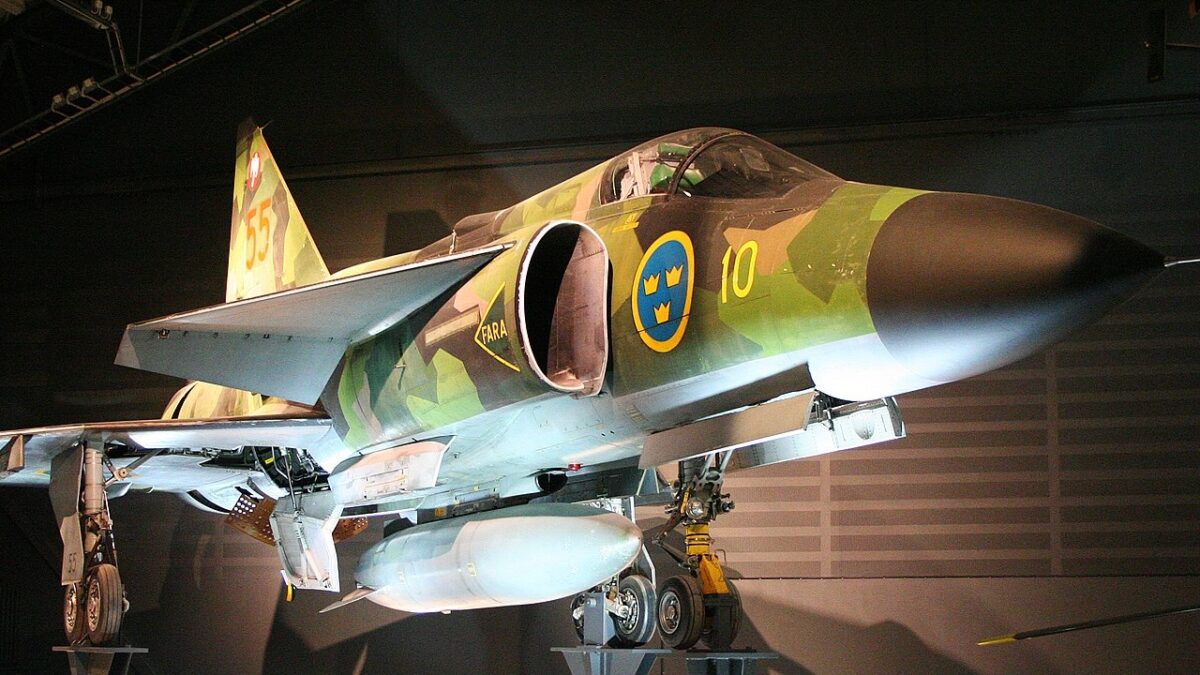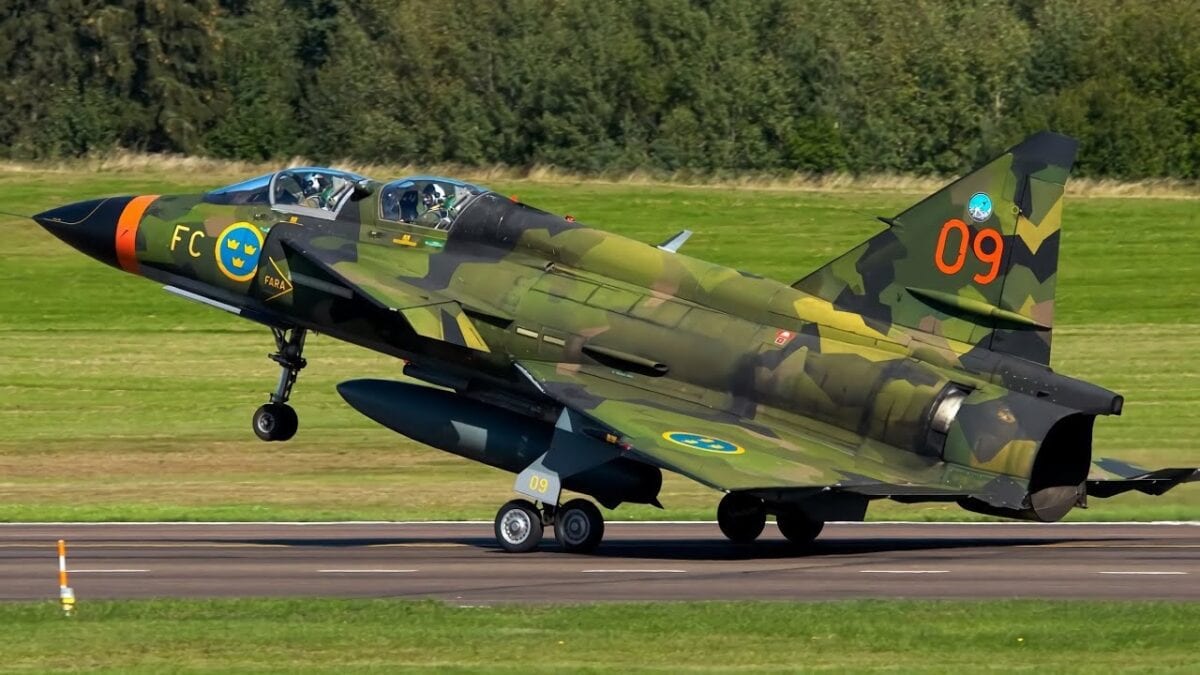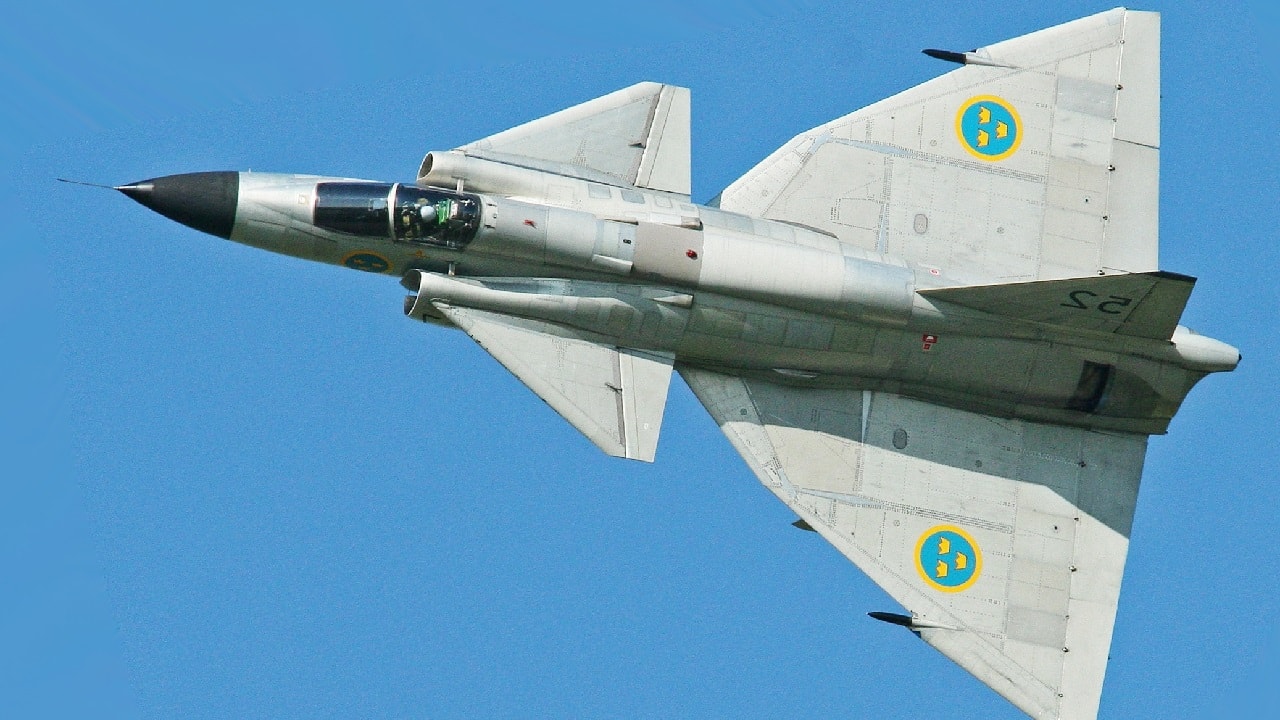Meet the Saab 37 Viggen, A Cold Warrior in the Sky for Sweden: Few aircraft could be as aptly named as the Saab 37 “Viggen” – translated to “Thunderbolt,” and to reference the three-forced lightning produced from the hammer of Thor. Despite the fact that Sweden had maintained a strict policy of neutrality, the Scandinavian nation amply prepared for a possible war with the Soviet Union during the darker days of the Cold War. To facilitate that effort, Stockholm also adhered to a strict policy of indigenous design, development, and production of its frontline military equipment, notably combat aircraft for the Flygvapnet (Air Force).
(Subscribe to 19FortyFive‘s New YouTube Channel here.)
The Saab 37 has been fittingly described as the “ Guardian of Neutrality!” The Royal Swedish Air Board proved to be blazing a trail ahead of other nations in the early Cold War era, and in 1958 began work on what was then known as “System 37,” which was developed to be integrated with the STRIL 60 air-defense environment of radars, computers and displays.
The result was the Saab 37 Viggen, a single-seat, single-engine fighter that featured a low double delta wing with two canards equipped with flaps. Designed to replace the aging Saab J35 Draken, the first of seven 37 prototype/pre-production Viggens was rolled out in November 1966, while the aircraft took its first flight the following February. Progress moved ahead quickly – dare we say at “lightning speed” – and the Viggen entered service with the Swedish Air Force in 1971.
It was the first canard-designed aircraft to be mass-produced, and at its introduction, it was also the most advanced fighter jet in Europe and remained so until the Panavia Tornado entered service in 1981.
Saab 37 – Advanced and Rugged Warbird
Designed as a single-seat aircraft, the Saab 37 featured advanced avionics, which included a central computer and heads-up display to replace a human navigator. This included the CK 37 (centralkalylator 37), the world’s first airborne computer to utilize integrated circuits.
The miniaturized digital computer, which used a memory unit with an eight-thousand-word “vocabulary,” could provide the pilot automated navigation, target location and even fire control. It was also integrated with the STRIL 60 ground defense network.
No other European aircraft of the time had such advanced radar, so great a speed range or so complete of a “fit” of avionics and weapons as the Viggen. However, in addition to being a highly technical aircraft, the Saab S37 was also designed to be robust.
The Royal Swedish Air Board also called for the multirole fighter to be “battlefield friendly,” which included the ability for it to operate from short runways and even use highways and remote roads in a pinch. The new fighter also had to be easy for conscript-level troops to help refuel – and clearly Stockholm was determined to put up a serious fight should the Soviets have invaded.
Speed Machine
The Saab 37 Viggen also lived up to its lightning bolt moniker. The aircraft was powered by a Volvo RM 8 turbofan, which was, in essence, a license-built version of the Pratt & Whitney JT8D engine that was used to power commercial airliners in the 1960s. An afterburner was added to the S37, while the airframe also featured a thrust-reverser, which could be used during landings.
The Saab 37 had the distinction of being the first aircraft to feature both an afterburner and thrust-reverser – a feature later seen in the Tornado and the Concorde commercial airliner. With its limited short take-off and landing (STOL) abilities, the Viggen could operate from airstrips that were around 500 meters.
The aircraft had a maximum speed of Mach 2.1 (1,385 miles per hour), a maximum range of 2,000 km with internal fuel, and a service ceiling of 18,000 meters. The RM 8 engine provided a rate of climb of 203 meters per second.
The Viggen was a fighter in every sense of the world, and was armed with a 30mm Oerlikon KCA cannon, and was also fitted with six underwing/under-fuselage hardpoints, which could be used to carry air-to-air and air-to-surface ordnance that initially included the Rb04E or Rb05A missiles for attack, and Rb27, Rb28 and Rb324 missiles for defense. Typical late-stage weapons load-outs also included AIM-9 Sidewinders, AIM-120 AMRAAM and RB71 Skyflash missiles.
Rare Birds
Stockholm originally planned to produce 800 of the Viggen, but the order was cut short due to costs after it was decided not to offer the Viggen for export. Saab had initially marketed the aircraft around the world, but Swedish export laws were one issue – while the United States also blocked a potential sale to India by not granting an export license for the engine, as it used American technology.
In total, just 329 Viggens of all models were ever built, and the aircraft served in the Flygvapnet until 2005. The fighter was never used in combat, yet the aircraft would have been like a thunderbolt from the heavens had any pilot of the Viggen taken to the skies in anger. Today, less than twenty of the cutting-edge aircraft remain, with just a handful in foreign aviation and military museums.

Making its first UK Airshow appearance, this amazing Viggen is operated by the Swedish AF Heritage Flight in genuine F7 markings. Seen during its solo routine. c/n 37-098. 2013 Waddington Airshow. 6-7-2013

Saab S37. Image Credit: Creative Commons.

Saab S37. Image Credit: Creative Commons.

Image of Saab S37 fighter. Image Credit: Creative Commons.
Now a Senior Editor for 1945, Peter Suciu is a Michigan-based writer who has contributed to more than four dozen magazines, newspapers and websites. He regularly writes about military hardware, and is the author of several books on military headgear including A Gallery of Military Headdress, which is available on Amazon.com. Peter is also a Contributing Writer for Forbes.

